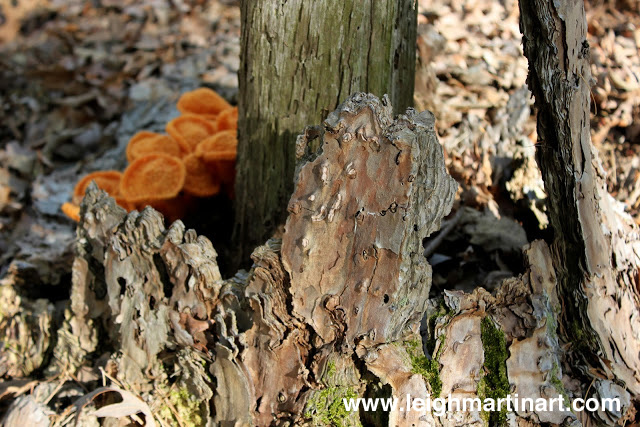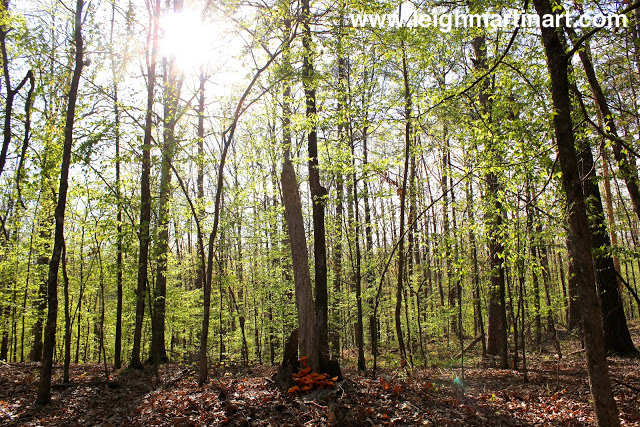Now that my web site is live, I'm back on course to finish up this project once and for all. Another minor holdup this summer involved finding the right yarn for this species - black jelly oyster. After going through my immense stash of every color you can think of (seriously, I think I own over half of the available shades of Knit Picks Palette), I finally found a hue that was satisfactory. The most interesting part about black jelly fungus is the underside, so just imagine that the branch these little guys are growing on has just been overturned to expose the surface that has been buried in the duff.... very CLEAN duff, obviously. The bottom of these forms show some intricate detailing for the gills that is unfortunately not too visible in my photos due to the darkness of the color (there had to be a drawback), but trust me, it's there! I used the same stitch technique as I did with the gills of Lactarius indigo, if that helps.

















